Equipment Cost Estimator
When planning any construction project, one of the critical factors that can significantly impact your budget is the cost of equipment. From heavy machinery like excavators and cranes to smaller tools and specialized devices, understanding the equipment costs upfront is essential for accurate project planning. With an equipment cost estimator, you can get a clear, detailed breakdown of the expenses associated with renting or purchasing the equipment necessary for your project. This not only helps in managing costs effectively but also ensures that your project remains on track financially. At Estimate Florida Consulting, we provide precise equipment cost estimates to help contractors and developers make informed decisions, minimizing surprises down the road.
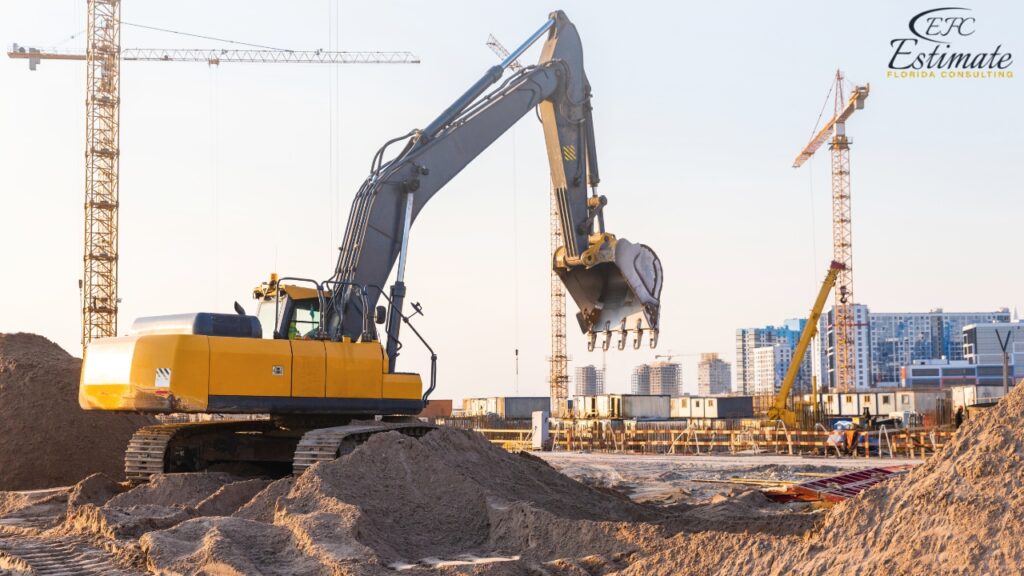
Factors Influencing Equipment Costs
The cost of equipment can vary widely depending on several factors, including the type of equipment, its condition (new or used), brand, purchase or rental options, maintenance needs, and additional features like attachments or upgrades. Understanding these factors will help you estimate the total cost of your equipment needs and make informed decisions that align with your budget and project requirements.
Type of Equipment
The type of equipment you need is one of the most significant factors affecting the overall cost. Different types of equipment serve specific functions within a project, and each type has its own cost range based on its complexity, capacity, and application.
Type of Equipment | Average Cost Range (Purchase) |
Excavators | $100,000 – $500,000 |
Bulldozers | $80,000 – $400,000 |
Backhoe Loaders | $30,000 – $120,000 |
Cranes | $200,000 – $1,500,000 |
Forklifts | $15,000 – $50,000 |
Skid Steer Loaders | $20,000 – $65,000 |
Generators | $10,000 – $50,000 |
Air Compressors | $2,000 – $15,000 |
Excavators
Excavators are essential for various construction tasks, including digging, trenching, and material handling. The cost of purchasing an excavator typically ranges from $100,000 to $500,000, depending on the size, power, and features. Excavators are available in various sizes, from compact models for small-scale projects to large, heavy-duty machines for major construction sites. The choice of excavator should be based on the specific needs of your project, including the type of material being excavated, the depth of digging required, and the available space on the job site.
Bulldozers
Bulldozers are powerful machines used for earthmoving, grading, and leveling surfaces. The cost of a bulldozer ranges from $80,000 to $400,000, depending on its size, horsepower, and capabilities. Bulldozers are essential for preparing construction sites, clearing land, and maintaining roads. When choosing a bulldozer, consider the terrain, the type of material being moved, and the required precision for grading or leveling tasks. Investing in a high-quality bulldozer can significantly improve efficiency on large construction sites and reduce the time required to complete earthmoving tasks.
Backhoe Loaders
Backhoe loaders are versatile machines that combine the capabilities of an excavator and a loader. They are commonly used in smaller construction projects for digging, trenching, and material handling. The cost of a backhoe loader typically ranges from $30,000 to $120,000, depending on its size, power, and features. Backhoe loaders are ideal for projects that require a combination of digging and loading capabilities in a compact, maneuverable machine. When selecting a backhoe loader, consider the specific tasks it will perform, as well as the size and accessibility of the job site.
Cranes
Cranes are used for lifting and moving heavy materials on construction sites, in industrial settings, and for infrastructure projects. The cost of a crane can range from $200,000 to $1,500,000, depending on its lifting capacity, reach, and specialized features. Cranes are essential for tasks that require lifting heavy loads to significant heights, such as building high-rise structures, installing large industrial equipment, or constructing bridges. When choosing a crane, consider the maximum load weight, the height and distance it needs to reach, and the space available for operation and setup.
Forklifts
Forklifts are widely used in warehouses, manufacturing facilities, and construction sites for lifting, transporting, and stacking materials. The cost of a forklift typically ranges from $15,000 to $50,000, depending on its lifting capacity, fuel type, and additional features. Forklifts are essential for material handling tasks that require maneuverability and precision, such as loading and unloading trucks, moving pallets, and organizing inventory. When selecting a forklift, consider the weight and size of the materials being handled, the height of shelving or storage racks, and the operating environment, such as indoor or outdoor use.
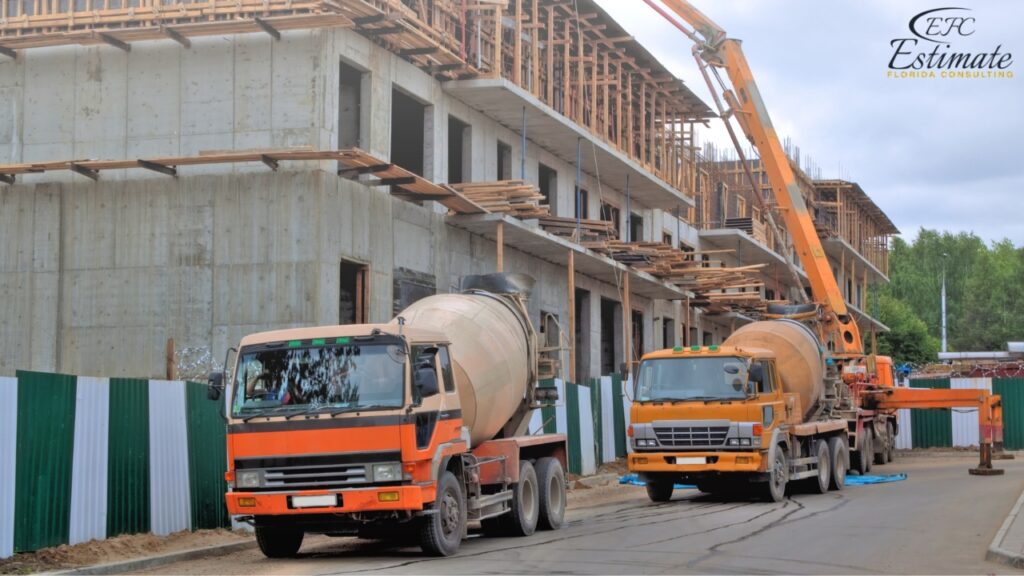
Skid Steer Loaders
Skid steer loaders are compact, versatile machines used for digging, grading, and material handling in construction, landscaping, and agricultural projects. The cost of a skid steer loader typically ranges from $20,000 to $65,000, depending on its size, power, and attachments. Skid steer loaders are known for their maneuverability and ability to operate in tight spaces, making them ideal for smaller job sites or tasks that require precision. When choosing a skid steer loader, consider the specific tasks it will perform, the terrain it will operate on, and the availability of compatible attachments for added versatility.
Generators
Generators provide power for construction sites, industrial facilities, and commercial operations, especially in areas without access to the electrical grid. The cost of a generator typically ranges from $10,000 to $50,000, depending on its power output, fuel type, and additional features. Generators are essential for ensuring a continuous power supply for tools, machinery, and lighting, particularly in remote or off-grid locations. When selecting a generator, consider the total power requirements of your equipment, the duration of operation, and the availability of fuel sources, such as diesel, gasoline, or propane.
Air Compressors
Air compressors are used to power pneumatic tools, machinery, and equipment in construction, manufacturing, and other industrial applications. The cost of an air compressor typically ranges from $2,000 to $15,000, depending on its capacity, power source, and additional features. Air compressors are essential for tasks that require consistent, high-pressure air, such as operating jackhammers, spray guns, and impact wrenches. When choosing an air compressor, consider the specific tools it will power, the required air pressure (PSI) and flow rate (CFM), and the operating environment, such as indoor or outdoor use.
Condition
The condition of the equipment—whether new, used, or refurbished—will significantly impact the cost. New equipment typically comes with the highest price tag but also offers the benefits of the latest technology, full warranties, and no previous wear and tear. Used or (PSI) , on the other hand, can offer significant cost savings but may come with risks such as reduced lifespan, potential maintenance issues, and limited warranties.
Condition | Cost Relative to New |
New | 100% |
Used (Good Condition) | 50% – 75% |
Refurbished | 60% – 85% |
New Equipment
Purchasing new equipment ensures that you are getting the latest technology, full manufacturer warranties, and equipment that has not been subjected to any previous wear and tear. However, new equipment is also the most expensive option, typically costing 100% of the original price. New equipment is ideal for projects where reliability, efficiency, and the latest features are critical, and where the budget allows for the higher upfront cost. Additionally, new equipment may offer better fuel efficiency, lower emissions, and compliance with the latest safety standards, contributing to long-term cost savings and environmental benefits.
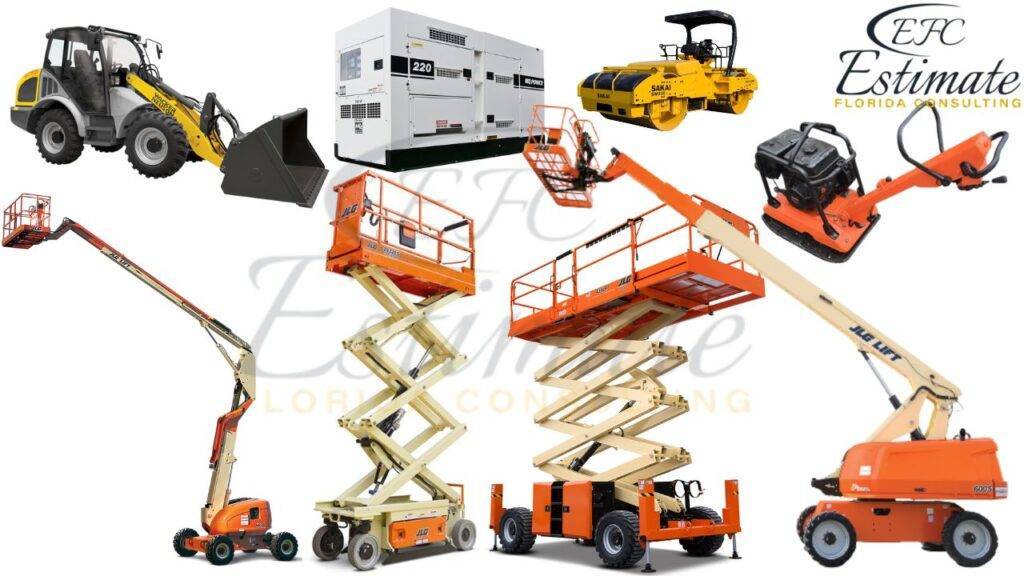
Rent from us and get the job done right.
Looking for a reliable construction equipment rental company? Look no further. Rent from us today.
Used Equipment (Good Condition)
Used equipment that is in good condition can be a cost-effective option, typically costing 50% to 75% of the price of new equipment. While used equipment may have some wear and tear, it can still offer reliable performance if properly maintained and serviced. Used equipment is ideal for projects with tighter budgets or for tasks that do not require the latest technology. When purchasing used equipment, it’s important to conduct a thorough inspection, review maintenance records, and ensure that the equipment is still compliant with current safety and environmental regulations. Buying from reputable dealers or through certified pre-owned programs can also reduce the risk associated with used equipment purchases.
Refurbished Equipment
Refurbished equipment is used equipment that has been restored to a like-new condition, often by replacing worn parts, updating software, and performing extensive maintenance. Refurbished equipment typically costs 60% to 85% of the price of new equipment. This option offers a balance between cost savings and reliability, as refurbished equipment often comes with limited warranties and has been inspected and repaired by professionals. Refurbished equipment is ideal for projects where budget constraints exist but where reliability and performance are still important. Refurbished equipment can also be a good choice for equipment that is only needed temporarily or for less critical applications.
Purchase vs. Rental
Deciding whether to purchase or rent equipment depends on several factors, including the duration of the project, the frequency of equipment use, and budget constraints. While purchasing equipment provides long-term ownership, renting can offer flexibility and lower upfront costs, especially for short-term or one-time projects.
Option | Typical Cost Structure |
Purchase | Full price upfront |
Short-Term Rental | Daily or weekly rates |
Long-Term Rental | Monthly or annual rates |
Lease-to-Own | Monthly payments with buyout option |
Purchase
Purchasing equipment involves paying the full price upfront, which can be a significant investment. However, owning the equipment allows for unrestricted use, the ability to customize or modify the equipment, and potential tax benefits such as depreciation. Purchasing is ideal for long-term projects or businesses that will use the equipment regularly over several years. Additionally, owning equipment can provide greater control over maintenance schedules, ensuring that the equipment is always in optimal condition. However, purchasing equipment also comes with responsibilities, including storage, maintenance, insurance, and potential resale value considerations.
Short-Term Rental
Short-term rental rates are typically charged on a daily or weekly basis, making this option ideal for projects that require equipment for a limited time. Short-term rentals offer flexibility and convenience, as the rental company often handles maintenance, delivery, and pickup. Renting is a cost-effective solution for one-time projects, testing new equipment before purchasing, or covering temporary equipment needs during peak periods. However, renting can become expensive if the equipment is needed for an extended period, so it’s important to compare the total rental cost against the purchase price, especially for longer projects.
Long-Term Rental
Long-term rental rates are usually offered on a monthly or annual basis and can be more cost-effective for projects that require equipment over an extended period. Long-term rentals often include maintenance services and may offer lower rates compared to short-term rentals. This option is ideal for projects where purchasing equipment is not feasible, such as for temporary or seasonal work, or for companies that prefer to avoid the upfront costs and responsibilities of ownership. Long-term rentals also provide the flexibility to upgrade or change equipment as project needs evolve, without the commitment of ownership.
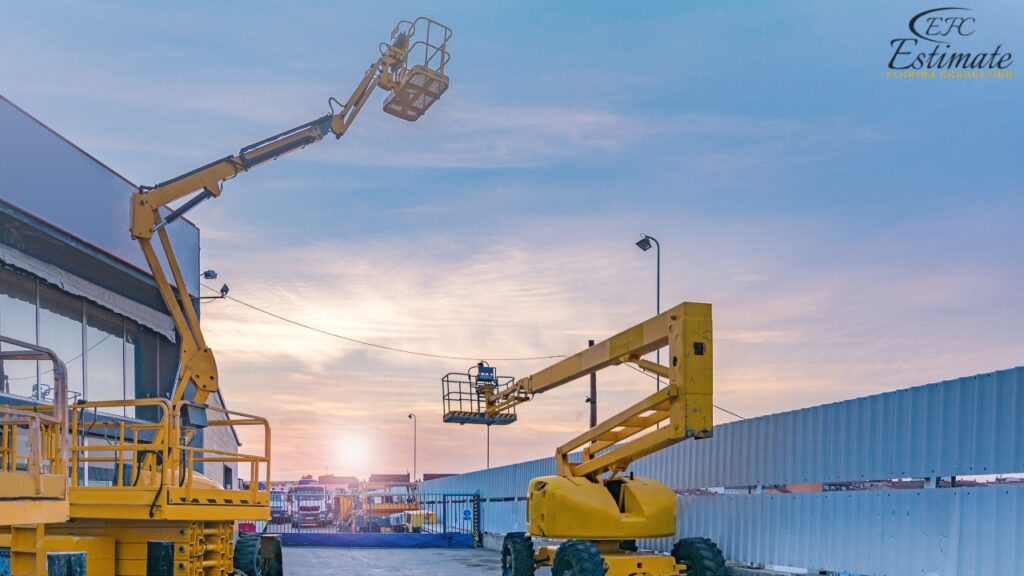
Lease-to-Own
Lease-to-own agreements involve making monthly payments towards the eventual purchase of the equipment, often with a buyout option at the end of the lease term. This option allows businesses to spread the cost of the equipment over time while still working towards ownership. Lease-to-own is ideal for companies that want to avoid large upfront payments but still wish to own the equipment in the long term. Lease-to-own agreements can also include options for early buyout or equipment upgrades, providing additional flexibility. However, it’s important to carefully review the terms of the lease-to-own agreement, including interest rates, fees, and buyout conditions, to ensure that it aligns with your financial goals.
Maintenance and Operating Costs
In addition to the initial purchase or rental cost, it’s important to account for ongoing maintenance and operating expenses. Regular maintenance is essential for keeping equipment in good working order, preventing breakdowns, and extending its lifespan.
Maintenance Component | Average Annual Cost (Percentage of Purchase Price) |
Routine Maintenance | 2% – 5% |
Repairs | 3% – 8% |
Fuel and Lubricants | 5% – 10% |
Insurance | 1% – 3% |
Routine Maintenance
Routine maintenance includes regular inspections, oil changes, filter replacements, and other preventive measures that help keep equipment in good working condition. The average annual cost of routine maintenance is typically 2% to 5% of the equipment’s purchase price. Regular maintenance is essential for preventing breakdowns, ensuring safety, and maintaining the efficiency of the equipment. Skipping routine maintenance can lead to more serious issues down the line, resulting in costly repairs or even equipment failure. Investing in a proactive maintenance schedule can extend the lifespan of your equipment and reduce overall operating costs.
Repairs
Repairs are needed when equipment components wear out or break down, and the cost can vary depending on the severity of the issue. The average annual cost of repairs is typically 3% to 8% of the equipment’s purchase price. While routine maintenance can help prevent many issues, some wear and tear are inevitable, especially in heavy-duty or high-usage environments. Planning for repair costs is essential for minimizing downtime and ensuring that your equipment remains operational when you need it most. Keeping detailed maintenance and repair records can also help you identify patterns of wear and anticipate future repair needs.
Fuel and Lubricants
The cost of fuel and lubricants is an ongoing operating expense that can represent a significant portion of the total cost of ownership, especially for equipment with high usage rates. Fuel and lubricants typically cost 5% to 10% of the equipment’s purchase price annually. Fuel-efficient equipment can help reduce these costs, as can regular maintenance that ensures the engine and moving parts operate smoothly. When budgeting for fuel and lubricants, consider factors such as the type of fuel used (diesel, gasoline, electric), the expected hours of operation, and the availability of fuel sources. In some cases, investing in more fuel-efficient equipment or alternative energy sources can lead to long-term savings.
Insurance
Insurance is necessary to protect your investment in equipment, covering potential risks such as theft, damage, or liability. The cost of insurance typically ranges from 1% to 3% of the equipment’s purchase price annually. Insurance policies can vary widely in terms of coverage, so it’s important to choose a policy that meets your specific needs, whether for construction, industrial, or commercial equipment. Comprehensive insurance coverage provides peace of mind, ensuring that your equipment is protected against unexpected events that could otherwise result in significant financial losses.
House Construction Videos
Check Out 10 minutes
Check Out 5 minutes
1 Year Construction 15 minutes
Estimating the Total Cost
To provide a clearer understanding of what to expect, here’s an example of estimating the total cost of acquiring and operating equipment for a mid-sized construction project.
- Excavator (New): $300,000
- Bulldozer (New): $250,000
- Backhoe Loader (Used, Good Condition): $60,000
- Fuel and Lubricants (Annual): 7% of total equipment cost
- Routine Maintenance (Annual): 3% of total equipment cost
- Repairs (Annual): 5% of total equipment cost
- Insurance (Annual): 2% of total equipment cost
Cost Component | Low Estimate | High Estimate |
Excavator (New) | $300,000 | $300,000 |
Bulldozer (New) | $250,000 | $250,000 |
Backhoe Loader (Used) | $60,000 | $60,000 |
Fuel and Lubricants (Annual) | $42,000 | $84,000 |
Routine Maintenance (Annual) | $18,000 | $36,000 |
Repairs (Annual) | $30,000 | $60,000 |
Insurance (Annual) | $12,000 | $24,000 |
Total Estimated Cost | $712,000 | $814,000 |
This example demonstrates how various components contribute to the overall cost of acquiring and operating equipment for a construction project. By understanding these costs, you can better plan your budget and ensure that all aspects of the project are covered, leading to a successful and efficient operation. Proper planning also helps you avoid unexpected expenses, ensuring that your project stays within budget and is completed on time.
Download Template For Construction Project Breakdown
- Materials list updated to the zip code
- Fast delivery
- Data base of general contractors and sub-contractors
- Local estimators
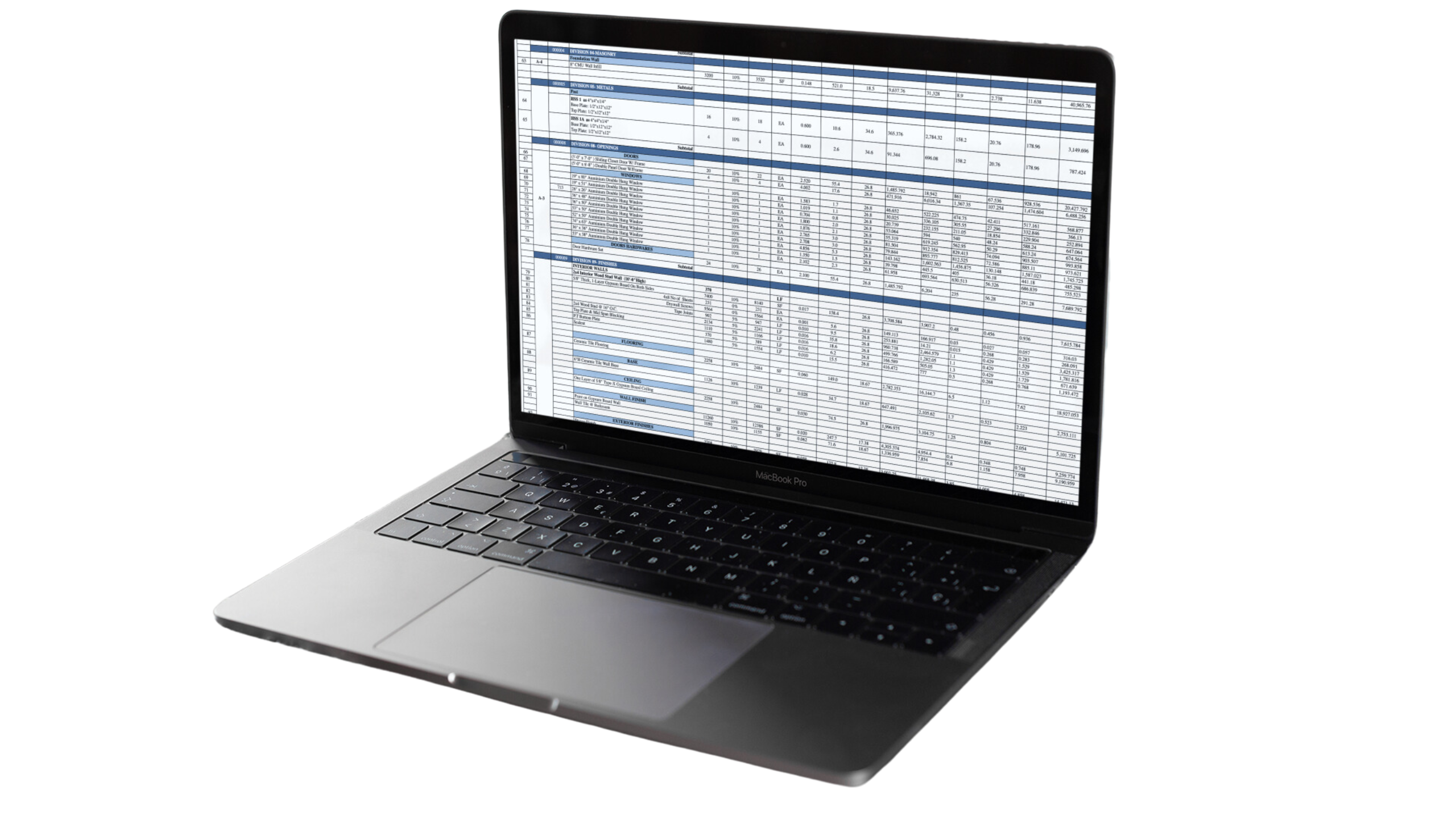
Equipment Cost by Project Type
The overall cost of equipment can vary widely depending on the specific project and the type of equipment required. Whether you’re managing a construction site, a manufacturing facility, or a large-scale infrastructure project, the costs will be influenced by the scope and duration of the project.
Project Type | Estimated Equipment Cost (Purchase) | Estimated Equipment Cost (Rental) |
Residential Construction | $500,000 – $2,000,000 | $5,000 – $20,000 per month |
Commercial Construction | $1,000,000 – $5,000,000 | $10,000 – $50,000 per month |
Industrial Manufacturing | $2,000,000 – $10,000,000 | $20,000 – $100,000 per month |
Infrastructure Projects | $5,000,000 – $20,000,000 | $50,000 – $200,000 per month |
Mining Operations | $10,000,000 – $50,000,000 | $100,000 – $500,000 per month |
Residential Construction
Residential construction projects, such as building single-family homes or multi-unit housing, typically require a range of equipment, including excavators, backhoe loaders, and concrete mixers. The estimated equipment cost for purchasing ranges from $500,000 to $2,000,000, depending on the size and complexity of the project. For rental, the cost ranges from $5,000 to $20,000 per month. The equipment needs for residential construction vary based on the project’s scale, with larger developments requiring more substantial investment in equipment. Renting equipment is often a more cost-effective solution for smaller builders or contractors who do not need to own heavy machinery for ongoing use.
Commercial Construction
Commercial construction projects, such as building offices, retail spaces, or industrial facilities, typically require more specialized equipment, including cranes, bulldozers, and aerial lifts. The estimated equipment cost for purchasing ranges from $1,000,000 to $5,000,000, while rental costs range from $10,000 to $50,000 per month. Commercial projects often involve more complex construction techniques and higher safety standards, which necessitate the use of advanced equipment. The decision to purchase or rent equipment depends on the project duration, with longer-term projects potentially justifying the investment in purchasing machinery.
Industrial Manufacturing
Industrial manufacturing projects, such as setting up production lines or expanding factory capabilities, require a variety of equipment, including forklifts, industrial generators, and specialized machinery. The estimated equipment cost for purchasing ranges from $2,000,000 to $10,000,000, while rental costs range from $20,000 to $100,000 per month. Manufacturing projects often involve high capital expenditures, and the choice between purchasing and renting equipment will depend on the expected lifespan of the project and the specific equipment needs. Renting may be advantageous for temporary expansions or pilot projects, while purchasing is often necessary for long-term manufacturing operations.
Infrastructure Projects
Infrastructure projects, such as building roads, bridges, or public utilities, typically require heavy-duty equipment, including bulldozers, cranes, and dump trucks. The estimated equipment cost for purchasing ranges from $5,000,000 to $20,000,000, while rental costs range from $50,000 to $200,000 per month. Infrastructure projects are often large-scale and require significant investment in equipment. The decision to purchase or rent equipment will depend on the project timeline and the availability of funding. Renting can provide flexibility, allowing project managers to scale up or down based on project needs, while purchasing may be more cost-effective for long-term or multiple-phase projects.
Mining Operations
Mining operations, including both surface and underground mining, require specialized equipment such as excavators, dump trucks, and conveyor systems. The estimated equipment cost for purchasing ranges from $10,000,000 to $50,000,000, while rental costs range from $100,000 to $500,000 per month. Mining equipment is often among the most expensive due to the heavy-duty nature of the work and the need for reliability in harsh conditions. Purchasing equipment is common in the mining industry due to the long-term nature of most mining projects, though rental options are available for specific needs or temporary increases in capacity.
Equipment Costs by Project Scope and Application
Here’s a breakdown of estimated equipment costs by application, providing you with a clear understanding of how different project types impact overall costs:
Application | Estimated Equipment Cost Range | Total Cost Range |
Construction Equipment | $50,000 – $500,000+ | $50,000 – $1,000,000+ (depending on scope and complexity) |
Manufacturing Equipment | $10,000 – $300,000 | $10,000 – $600,000+ (depending on scope and complexity) |
Office and IT Equipment | $5,000 – $50,000 | $5,000 – $100,000+ (depending on scope and complexity) |
HVAC and Electrical Equipment | $10,000 – $100,000 | $10,000 – $200,000+ (depending on scope and complexity) |
Construction Equipment
Construction equipment costs can vary significantly depending on the type and size of the equipment needed. From excavators and bulldozers to cranes and concrete mixers, the initial purchase or lease of construction equipment can range from $50,000 to over $500,000. The total cost, including transportation, setup, and potential maintenance, can exceed $1,000,000, particularly for large-scale or highly complex projects. It’s essential to factor in the scope of the project and the specific equipment required to ensure accurate budgeting.
Manufacturing Equipment
Manufacturing equipment includes machinery and tools essential for production processes, such as CNC machines, assembly lines, and robotics. The cost of manufacturing equipment typically ranges from $10,000 for smaller, less complex machines to $300,000 or more for advanced, high-capacity equipment. The total cost, which may include installation, calibration, and ongoing maintenance, can exceed $600,000 depending on the scale and complexity of the manufacturing operations. Proper planning and a clear understanding of production needs are critical when estimating these costs.
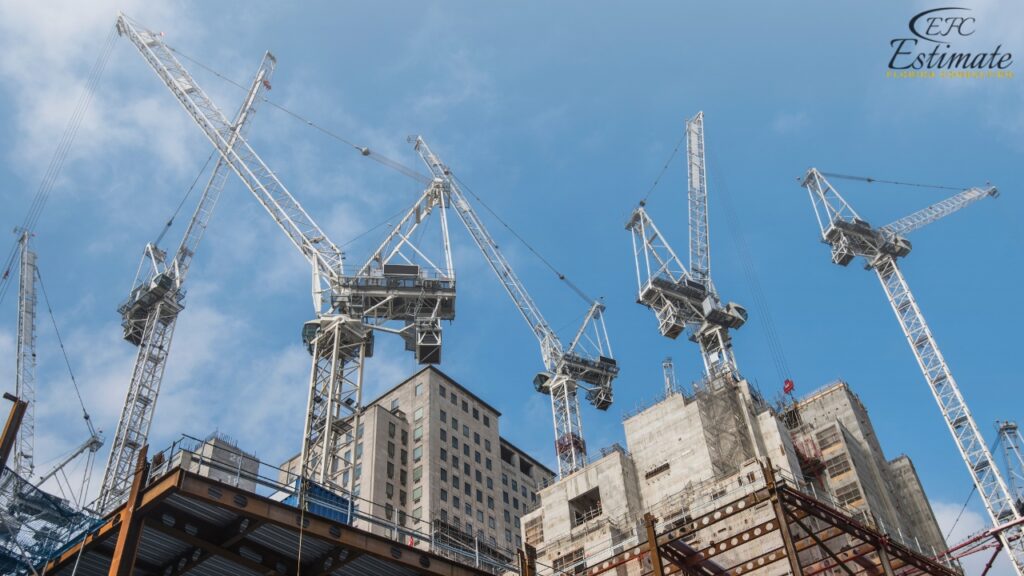
Office and IT Equipment
Office and IT equipment costs encompass everything from computers and servers to printers, networking hardware, and office furniture. For small to medium-sized businesses, these costs typically range from $5,000 to $50,000. However, the total cost can exceed $100,000 when considering large-scale IT infrastructure setups, advanced networking solutions, and specialized office equipment. The complexity of the IT systems and the need for secure and scalable solutions play a significant role in determining the overall expenditure.
HVAC and Electrical Equipment
HVAC (Heating, Ventilation, and Air Conditioning) and electrical equipment are critical components of any building’s infrastructure, ensuring comfort, safety, and efficiency. The cost for HVAC and electrical systems can range from $10,000 for smaller, less complex systems to $100,000 or more for larger, more sophisticated installations. The total cost, including installation, wiring, and ongoing maintenance, can exceed $200,000, particularly in large commercial or industrial buildings where high-performance and energy-efficient systems are required.
How Much Does Equipment Cost?
The cost of equipment can vary significantly depending on factors such as the type of equipment, its size, capacity, brand, and the complexity of installation. On average, equipment costs can range from $5,000 to $500,000 or more depending on the scope of the project and the industry involved.
Why Is Accurate Equipment Cost Estimation Important?
Accurate equipment cost estimation is vital for budgeting, planning, and ensuring the overall success of a project. Whether you’re managing a construction site, operating an industrial facility, or running a commercial business, the equipment you use directly impacts your efficiency, productivity, and profitability. By accurately estimating equipment costs, you can allocate resources more effectively, avoid unexpected expenses, and ensure that your project is completed on time and within budget.
Budgeting
Proper budgeting is the foundation of any successful project. Accurately estimating the cost of equipment allows you to allocate financial resources more effectively, ensuring that you have the right tools and machinery to complete your project without overspending. Equipment costs can represent a significant portion of your overall budget, and underestimating these expenses can lead to financial shortfalls, project delays, or the need to cut corners on other critical aspects of the project. By taking the time to accurately estimate equipment costs, you can create a realistic budget that accounts for all necessary expenses, including purchase or rental costs, maintenance, and potential upgrades.
Planning
Proper planning is essential for the efficient execution of any project. Accurate equipment cost estimation allows you to plan for the acquisition, deployment, and maintenance of the necessary tools and machinery, ensuring that everything is in place when you need it. This foresight helps prevent project delays, minimizes downtime, and ensures that your team can work efficiently. By understanding the costs associated with each piece of equipment, you can make informed decisions about whether to purchase or rent, how to schedule maintenance, and when to replace or upgrade equipment to maintain optimal productivity.
Project Success
The ultimate goal of any project is to complete it on time and within budget while meeting all quality and safety standards. Accurate equipment cost estimation is a critical component of achieving this goal. By understanding the full scope of equipment costs, you can avoid unexpected expenses, ensure that your project stays on track, and deliver a successful outcome. Whether you’re managing a construction project, overseeing an industrial operation, or running a commercial business, having the right equipment at the right time is essential for meeting deadlines, maintaining quality, and ensuring the satisfaction of clients and stakeholders.
Equipment Cost Estimator Services
Estimate Florida Consulting provides specialized estimate services for equipment acquisition, installation, and maintenance, ensuring that every aspect of your project is meticulously planned and executed. Our team works closely with you to gather all necessary information, including project scope, equipment requirements, and any existing conditions that may affect the installation process. With our expertise, you can be confident that your equipment-related project will be completed on time, within budget, and to the highest standards of quality and performance. Our estimates are tailored to reflect the specific challenges and opportunities of your project, ensuring that you receive the most accurate and reliable cost projections.
Equipment Cost Calculator
To assist you in planning and budgeting your equipment acquisition and installation project more accurately, Estimate Florida Consulting provides estimate services that include a comprehensive cost calculator. This tool allows you to input specific details about your project, such as the type of equipment, the quantity required, and the complexity of the installation. The calculator then provides an estimated cost range tailored to your project’s specific needs, offering you a clear understanding of what to expect financially. This cost calculator is an invaluable resource that helps ensure your project plans align with your budget, allowing you to allocate the necessary financial resources effectively.
Why Choose High-Quality Equipment?
Enhanced Efficiency
High-quality equipment is designed to operate efficiently, reducing operational costs, energy consumption, and the risk of breakdowns. Investing in reliable equipment can lead to long-term savings and greater productivity. Estimate Florida Consulting provides estimate services that help you select the best equipment for your needs, ensuring optimal efficiency and performance.
Reliability and Durability
In addition to efficiency, high-quality equipment offers greater reliability and durability, reducing the need for frequent repairs and replacements. This durability is crucial for maintaining consistent operations and achieving long-term project success. Estimate Florida Consulting provides estimate services that ensure your equipment is selected and installed to meet the highest standards of reliability and longevity.
Get 5 New Leads Next 7Days With Our System
- Multi-Family Building
- Hotel Building
- Hospital Building
- Warehouse Building
- High-Rise Building
- Shopping Complex
Conclusion
Accurate cost estimation is the foundation of a successful equipment acquisition, installation, or maintenance project. Estimate Florida Consulting provides comprehensive and precise estimate services that help you plan and execute your project with confidence. By understanding the cost components and potential variables, you can make informed decisions that align with your budget and project goals. Contact us today to get started with your equipment cost estimator services, and take the first step toward creating a reliable, efficient, and cost-effective system. With our expert guidance and detailed cost breakdowns, you can be assured that your project will be completed on time, within budget, and to the highest standards of quality and performance. Our commitment to excellence ensures that every aspect of your project is handled with the utmost care and professionalism, resulting in equipment that not only meets your needs but also enhances the overall efficiency and reliability of your operations.
FAQs on Equipment Cost Estimator
An equipment cost estimator helps you accurately determine the costs involved in acquiring, installing, or maintaining equipment for your project. This is crucial for effective budgeting, planning, and ensuring that your project stays within budget while meeting all performance and safety standards.
Equipment costs are influenced by several factors, including the type of equipment, its condition (new, used, or refurbished), brand, purchase or rental options, maintenance needs, and additional features like attachments or upgrades. Understanding these factors helps you make informed decisions that align with your budget and project requirements.
The type of equipment you need significantly impacts the cost. For example:
- Excavators: $100,000 – $500,000
- Bulldozers: $80,000 – $400,000
- Cranes: $200,000 – $1,500,000
- Forklifts: $15,000 – $50,000 Each type of equipment serves specific functions and comes with its own cost range based on its complexity and application.
The condition of the equipment affects its cost as follows:
- New: 100% of the original price, offering the latest technology and full warranties.
- Used (Good Condition): 50% – 75% of the original price, with potential savings but risks like reduced lifespan and maintenance issues.
- Refurbished: 60% – 85% of the original price, balancing cost savings with reliability.
The decision to purchase or rent depends on the duration of the project, frequency of equipment use, and budget constraints:
- Purchase: Full price upfront, ideal for long-term use.
- Short-Term Rental: Daily or weekly rates, best for short-term projects.
- Long-Term Rental: Monthly or annual rates, suitable for extended projects without the commitment of ownership.
- Lease-to-Own: Monthly payments with a buyout option, spreading the cost over time while working towards ownership.
In addition to the initial purchase or rental cost, ongoing expenses include:
- Routine Maintenance: 2% – 5% of the purchase price annually.
- Repairs: 3% – 8% of the purchase price annually.
- Fuel and Lubricants: 5% – 10% of the purchase price annually.
- Insurance: 1% – 3% of the purchase price annually. These costs are essential for keeping equipment in good working condition and ensuring long-term reliability.
To estimate the total cost, consider the equipment purchase or rental costs, ongoing maintenance, and any additional expenses like fuel, insurance, and repairs. For example, acquiring an excavator, bulldozer, and backhoe loader for a construction project could cost between $712,000 and $814,000, depending on various factors.
The overall cost varies by project type:
- Residential Construction: $500,000 – $2,000,000 (purchase), $5,000 – $20,000 per month (rental).
- Commercial Construction: $1,000,000 – $5,000,000 (purchase), $10,000 – $50,000 per month (rental).
- Industrial Manufacturing: $2,000,000 – $10,000,000 (purchase), $20,000 – $100,000 per month (rental).
- Infrastructure Projects: $5,000,000 – $20,000,000 (purchase), $50,000 – $200,000 per month (rental).
Accurate cost estimation is essential for budgeting, planning, and ensuring project success. It helps allocate resources effectively, avoid unexpected expenses, and complete projects on time and within budget.
Estimate Florida Consulting provides specialized estimate services for equipment acquisition, installation, and maintenance. We offer detailed cost calculators and expert guidance, ensuring your project stays within budget and meets all quality and performance standards.
High-quality equipment offers enhanced efficiency, reducing operational costs and downtime, and ensuring long-term success. It also provides greater reliability and durability, minimizing the need for frequent repairs and replacements. Investing in high-quality equipment is crucial for maintaining consistent operations and achieving project goals.
Estimate Florida Consulting offers a comprehensive cost calculator that allows you to input specific project details and receive an estimated cost range tailored to your needs. This tool helps ensure your project plans align with your budget, allowing for effective financial resource allocation.
We Provide Equipment Cost Estimator
Florida’s Cities
- Alachua
- Altamonte Springs
- Anna Maria
- Apalachicola
- Apopka
- Atlantic Beach
- Auburndale
- Aventura
- Avon Park
- Bal Harbour
- Bartow
- Bay Harbor Islands
- Boca Raton
- Bonita Springs
- Boynton Beach
- Bradenton
- Brooksville
- Cape Canaveral
- Cape Coral
- Casselberry
- Celebration
- Chipley
- Cinco Bayou
- Clearwater
- Clermont
- Clewiston
- Cocoa
- Cocoa Beach
- Coconut Creek
- Coral Gables
- Coral Springs
- Crystal River
- Dania Beach
- Davie
- Daytona Beach
- Deerfield Beach
- DeFuniak Springs
- DeLand
- Delray Beach
- Deltona
- Destin
- Dunedin
- Eagle Lake
- Edgewater
- Edgewood
- Eustis
- Fort Lauderdale
- Fort Meade
- Fort Myers
- Fort Myers Beach
- Fort Pierce
- Fort Walton Beach
- Fruitland Park
- Gainesville
- Greenacres
- Green Cove Springs
- Gulf Breeze
- Gulfport
- Haines City
- Hallandale Beach
- Hawthorne
- Hialeah
- Hialeah Gardens
- Highland Beach
- Hollywood
- Holly Hill
- Holmes Beach
- Homestead
- Hypoluxo
- Indialantic
- Jacksonville
- Juno Beach
- Jupiter
- Key Biscayne
- Key West
- Kissimmee
- LaBelle
- Lady Lake
- Lake Alfred
- Lakeland
- Lake Mary
- Lake Park
- Lake Wales
- Lake Worth
- Lantana
- Largo
- Lauderdale By The Sea
- Lauderhill
- Leesburg
- Lighthouse Point
- Longboat Key
- Longwood
- Maitland
- Marco Island
- Margate
- Melbourne
- Melbourne Beach
- Miami
- Miami Beach
- Milton
- Minneola
- Miramar
- Mount Dora
- Naples
- Neptune Beach
- New Port Richey
- New Smyrna Beach
- Niceville
- North Miami
- North Miami Beach
- North Port
- Oakland Park
- Ocala
- Ocean Ridge
- Ocoee
- Okeechobee
- Oldsmar
- Orange Park
- Orlando
- Ormond Beach
- Oviedo
- Palatka
- Palm Bay
- Palm Beach
- Palm Beach Gardens
- Palm Coast
- Palmetto
- Panama City
- Panama City Beach
- Pembroke Pines
- Pensacola
- Pinecrest
- Pinellas Park
- Plant City
- Plantation
- Pompano Beach
- Ponce Inlet
- Port Orange
- Port St. Lucie
- Punta Gorda
- Rockledge
- Royal Palm Beach
- St. Augustine
- St. Augustine Beach
- St. Cloud
- St. Pete Beach
- St. Petersburg
- Safety Harbor
- Sanford
- Sanibel
- Sarasota
- Satellite Beach
- Seaside
- Sebastian
- Sewall's Point
- Shalimar
- Stuart
- Surfside
- Tallahassee
- Tamarac
- Tampa
- Tarpon Springs
- Tavares
- Temple Terrace
- Titusville
- Treasure Island
- Valparaiso
- Venice
- Vero Beach
- Wellington
- West Melbourne
- West Palm Beach
- Weston
- Wilton Manors
- Winter Garden
- Winter Haven
- Winter Park
- Winter Springs
Google Reviews

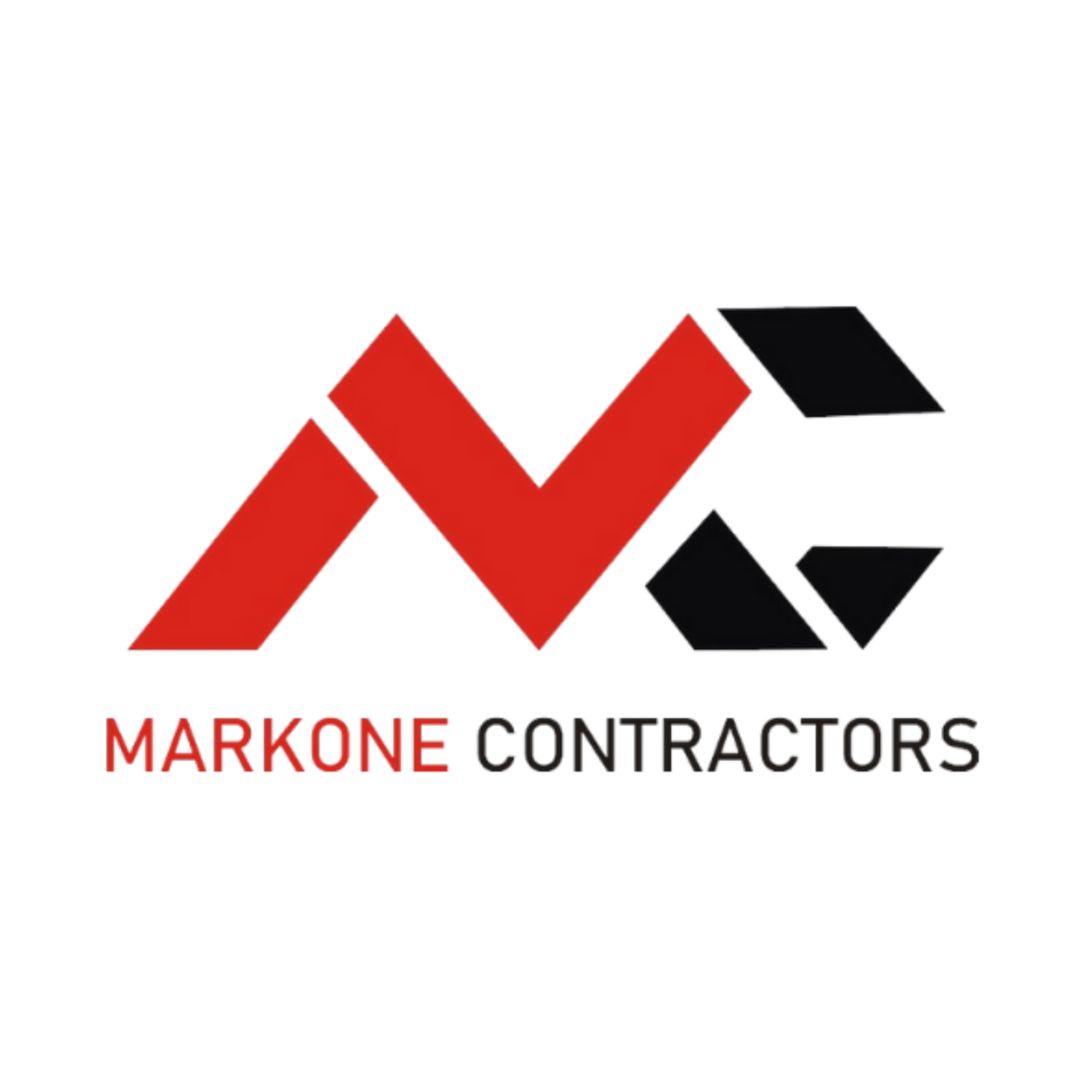
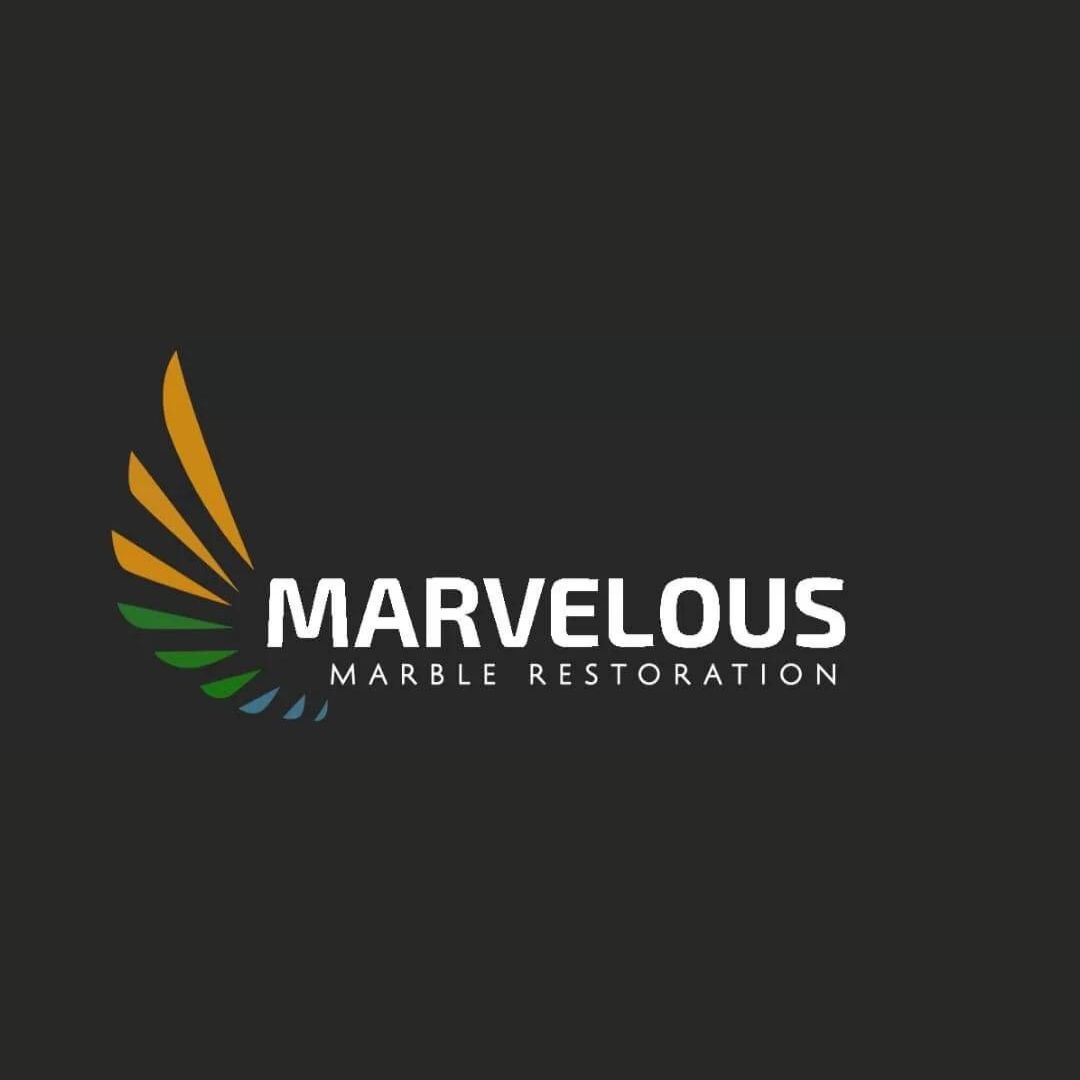
Process To Get The Equipment Cost Estimate Report
Here I am going to share some steps to get the equipment cost estimate report.
-
You need to send your plan to us.
You can send us your plan on info@estimatorflorida.com
-
You receive a quote for your project.
Before starting your project, we send you a quote for your service. That quote will have detailed information about your project. Here you will get information about the size, difficulty, complexity and bid date when determining pricing.
-
Get Estimate Report
Our team will takeoff and estimate your project. When we deliver you’ll receive a PDF and an Excel file of your estimate. We can also offer construction lead generation services for the jobs you’d like to pursue further.

